
Over the centuries, humans (and sheep) have taken a toll on the volcano- and glacier-shaped landscape in Iceland. But what remains is still spectacular.
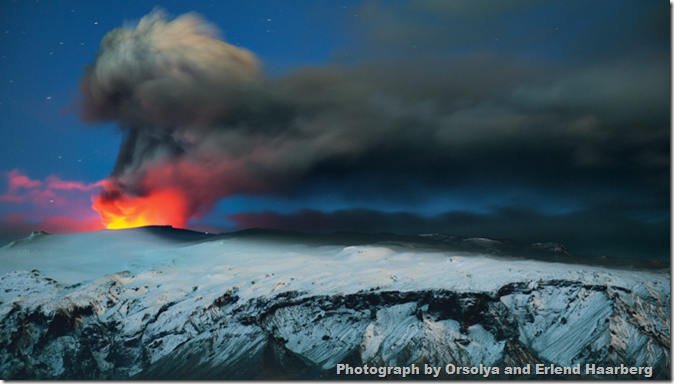 |
| The volcano Eyjafjallajökull, in Iceland, just before dawn on April 23, 2010: The worst is over. Lava flows freely. Earlier, as it punched through the ice cap, it triggered a melt-water flood that destroyed roads and farms, and a steam explosion that hurled ash into the stratosphere, stopping air traffic for a week. |
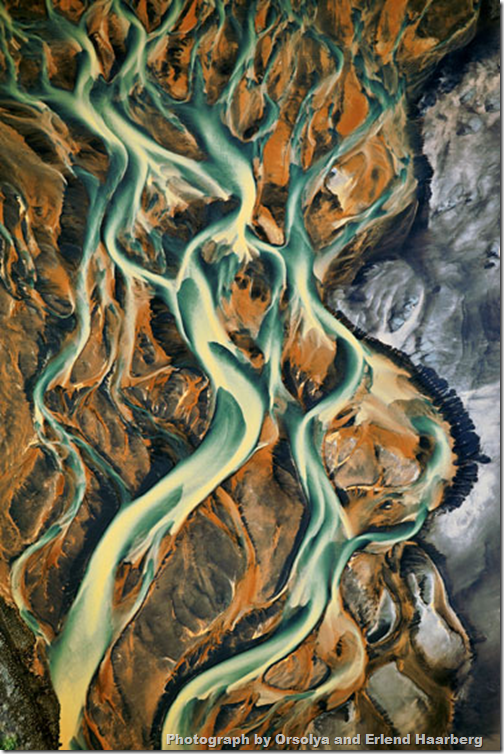 |
| A shifting stream drops bog iron onto volcanic sand near Háfur, on the south coast. |
 |
| At Litlanesfoss, the waterfall cross-sections an ancient lava flow, which formed columns as it cooled. |
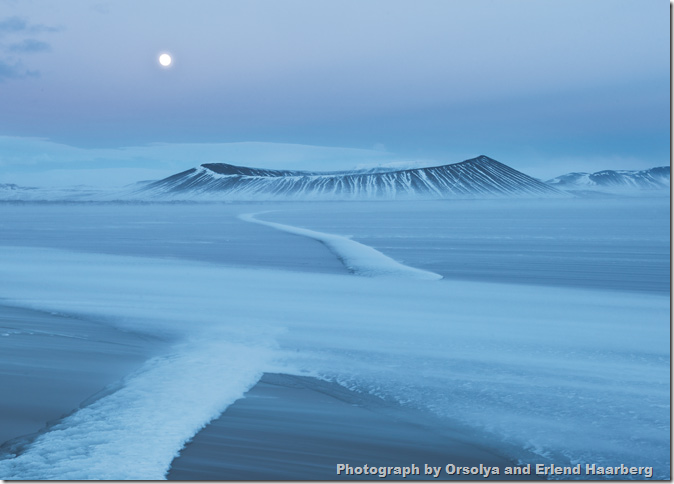 |
| When Hverfjall erupted 2,500 years ago, no one saw it - no one lived in Iceland. On a March evening photographer Orsolya Haarberg watched alone as a north wind scoured Mývatn lake's thin ice, sweeping snow into a drift that looked like a path to the crater. |
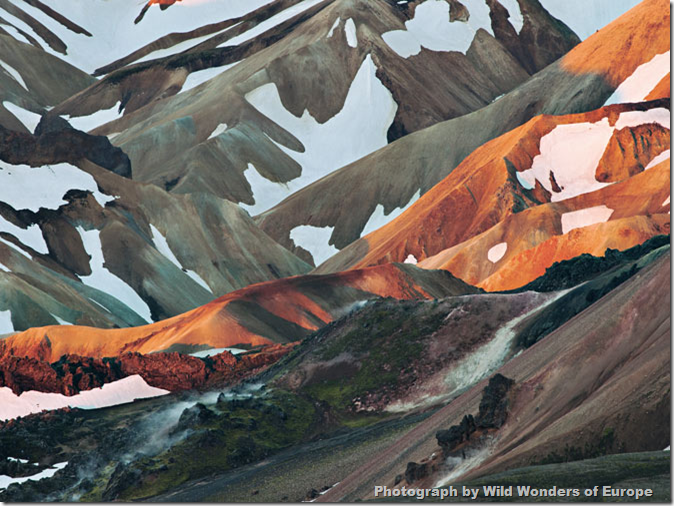 |
| The first beams of a June day spotlight a ridge of rusty volcanic rhyolite at Landmannalaugar, a hikers' favourite. The Haarbergs hiked up to an overlook after midnight; at dawn, around 3 a.m., the clouds gave them a tiny break. "Five minutes and it was over," says Orsolya. |
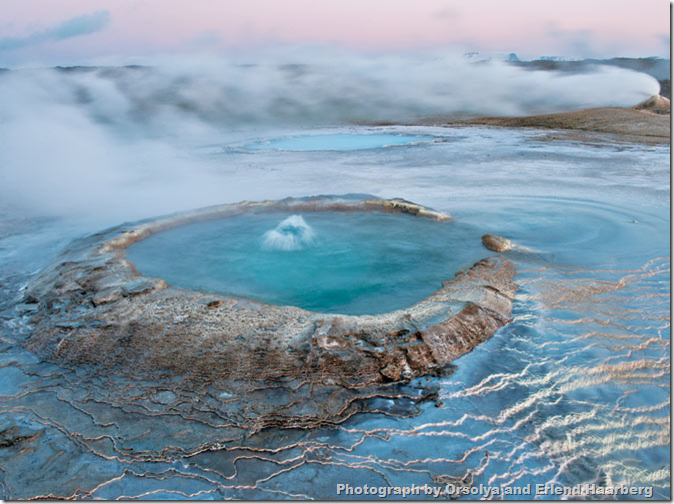 |
| At Hveravellir - literally "hot springs in the plain" - thin terraces of geyserite precipitate from the water as it cools. A notorious 18th-century outlaw, Fjalla-Eyvindur, stayed warm here for years, stealing sheep from summer pastures. |
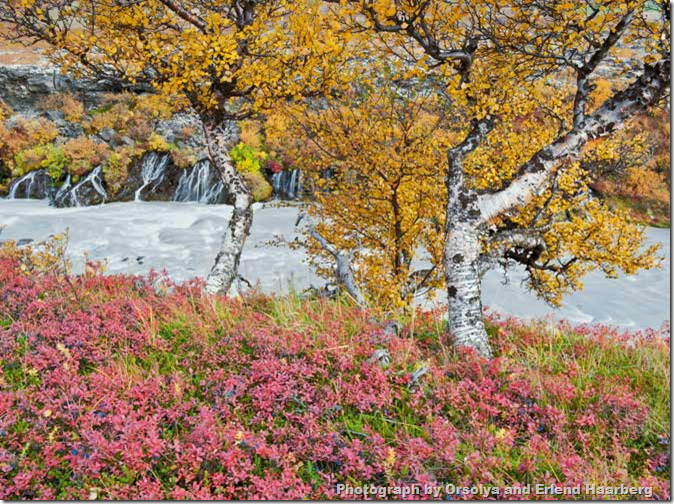 |
| Hraunfossar waterfall in September looks much as it would have in Viking days: birch trees, bog bilberries, and the Hvítá River, white with silt. The waterfall is a series of springs that plunge into the river on the far bank. |
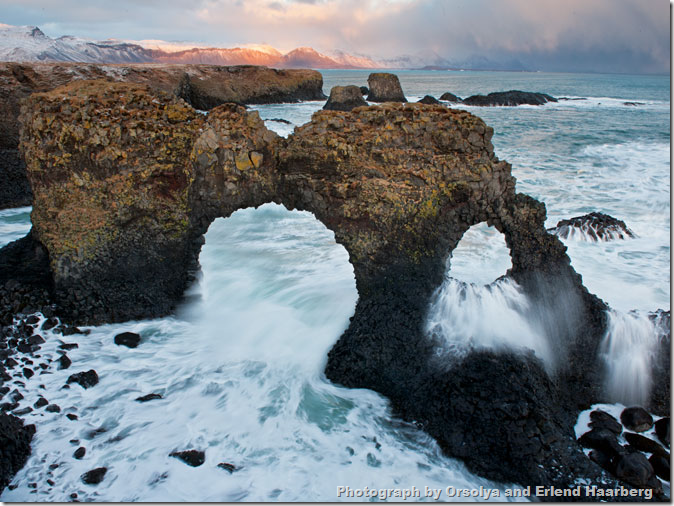 |
| Winter surf pours through arches it has carved in the basalt at Arnarstapi, on the Snæfellsnes Peninsula. In a few months the place will be a carnival of kittiwakes, seabirds that breed here. The large arch is roughly 40 feet high. |
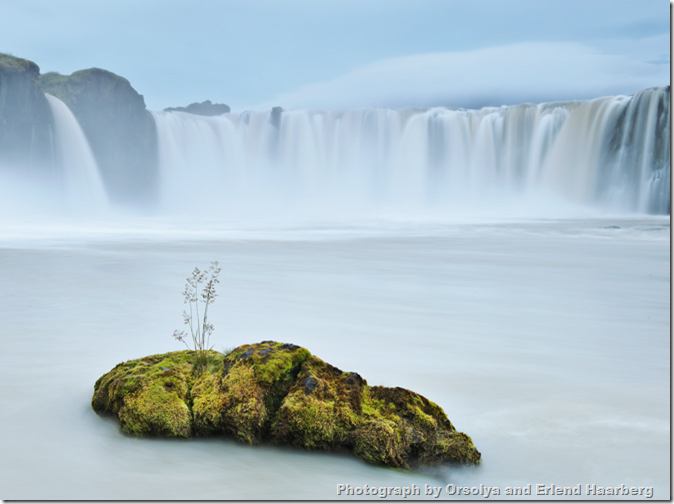 |
| A glacial torrent pours over a 40-foot-high ledge at Gođafoss, "waterfall of the gods." After the Icelandic assembly adopted Christianity in 1000, its leader threw his pagan idols into the falls. The mossy island, notes geographer Guđrún Gísladóttir, "is protected from sheep." |










No comments:
Post a Comment
Please adhere to proper blog etiquette when posting your comments. This blog owner will exercise his absolution discretion in allowing or rejecting any comments that are deemed seditious, defamatory, libelous, racist, vulgar, insulting, and other remarks that exhibit similar characteristics. If you insist on using anonymous comments, please write your name or other IDs at the end of your message.